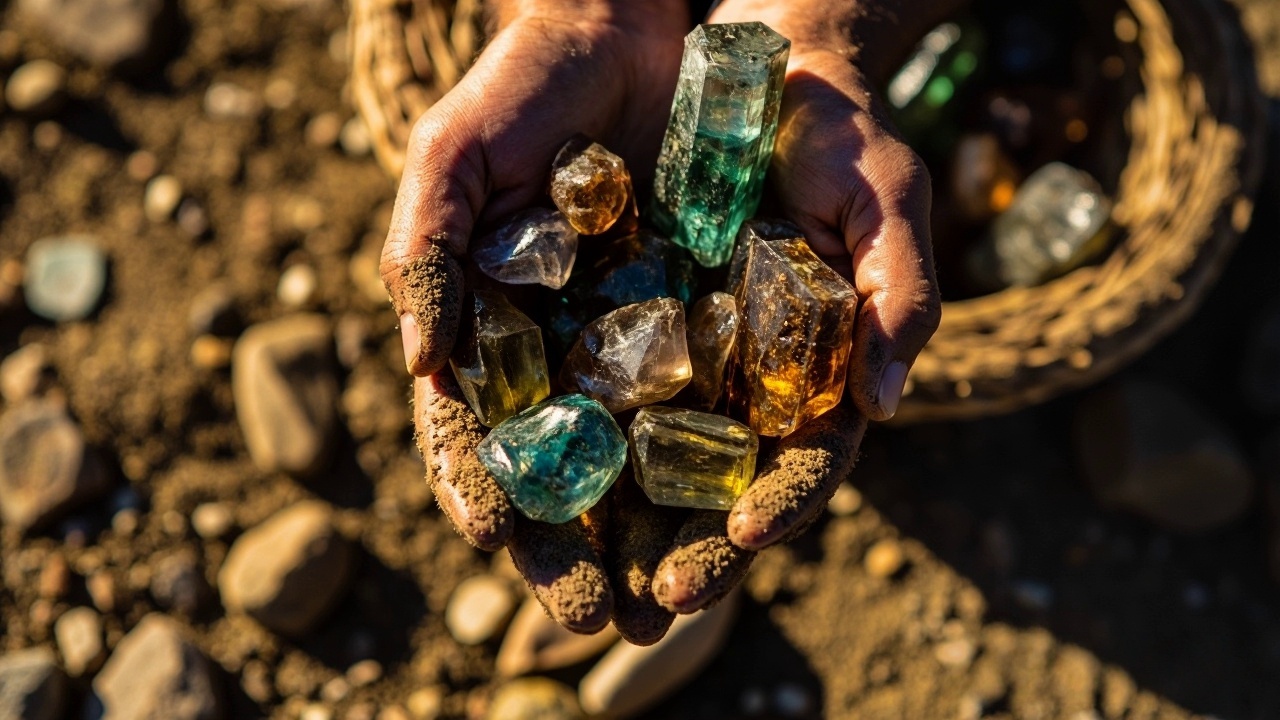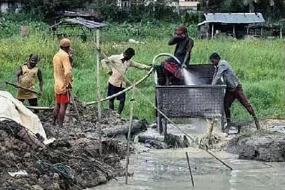💎 Why Are So Many Gemstones Found in Poor Countries?

It’s a common belief: the world’s most precious gemstones—rubies, sapphires, tourmalines—seem to come from some of the world’s poorest countries. Is this nature’s blessing or something else entirely?
🌍 A First Glance: The Global Gem Map
When people think of gemstones, certain countries immediately come to mind—Myanmar for pigeon blood rubies, Sri Lanka for Ceylon sapphires, Tanzania for tanzanite, and Afghanistan for neon tourmalines. These are all developing nations, and the connection seems obvious. But is this really the full picture?
🧭 Exceptions That Break the Rule
Let’s look at diamonds: the top producer globally is Australia, followed by Botswana, Russia, and then South Africa. Among them, Australia and Russia are developed countries. Australia is also the world’s leading source of opals—producing over 90% of the global supply—and has one of the most regulated and eco-conscious mining policies on the planet.
The United States, too, boasts deposits of garnet, tourmaline, turquoise, peridot, and sapphire (notably Montana sapphires). China has large reserves of rock crystal, sapphires in Shandong, and the globally prized Hetian jade from Xinjiang.
🔍 The Real Reason: Industrial Focus & Labor Dynamics
So why the lasting impression that only poor countries are rich in gems?
The answer lies not in geology, but in economics and industry. Many developing countries prioritize mining as a national resource because they lack strong industrial or tech sectors. The gemstone trade becomes a legacy industry—one that often spans generations. Labor is cheaper, regulations are looser, and there's a cultural familiarity with gemstone identification and trading.

One of our trusted suppliers is a fourth-generation gemstone trader—his family has worked in Sri Lanka’s mines for nearly a century. In places like this, children grow up recognizing gemstone types before they can read maps. That level of immersion cannot be replicated overnight in developed economies.
🌱 Development vs. Preservation: The Case of Australia
In contrast, countries like Australia, Canada, or Norway may have mineral wealth but maintain strict environmental policies. In Australia, for instance, any diamond mining must be followed by land rehabilitation. These legal frameworks raise the cost of extraction and slow down operations.
🏞️ The Hidden Reserves We May Never Touch
Estimates show the earth may hold far more gemstones than what’s currently mined. But many deposits remain untouched—either because they’re too deep, too inaccessible, or lie beneath urban land (like under New York City). Scientists have theorized about diamond-rich zones in the Earth’s mantle or gold deep in the core—but these are fantasy-level inaccessible.
🛒 The Ground Reality: How Gems Are Bought & Sold
When sourcing in these regions, gem buying isn’t a polished retail experience. Many transactions happen on the road, in local offices, or even on someone’s porch. Stones are stored in ziplock bags or pouches; deals are struck in minutes. When buying rough stones, one must estimate yield, clarity, and potential before cutting—unlike buying finished gems, where quality is visible.
This requires years of experience and deep local relationships. A successful buy can feel like a treasure hunt. A bad one, like sand slipping through your fingers.
📌 Frequently Asked Questions
- Q: Do developing countries have better gemstone quality?
A: Not necessarily. They often focus more on mining, but top-quality gems can be found in developed nations too. - Q: Are gems from poor countries ethical?
A: It depends on sourcing. Ethical sourcing is possible anywhere, but buyers must vet supply chains. - Q: Are there still undiscovered gem mines?
A: Yes—many exist but remain untapped due to geographic, political, or environmental constraints.
✨ Final Thoughts
Gemstones aren’t a “gift to the poor.” They are nature’s lottery, spread unevenly but managed very differently by each country. In truth, it's not the presence of gemstones, but what a country chooses to do with them, that writes the story.
Next time you admire a brilliant ruby or glowing tourmaline, remember—its origin reflects not only geological time, but centuries of human choices.
Want to learn more about our sourcing process or design your own custom piece?